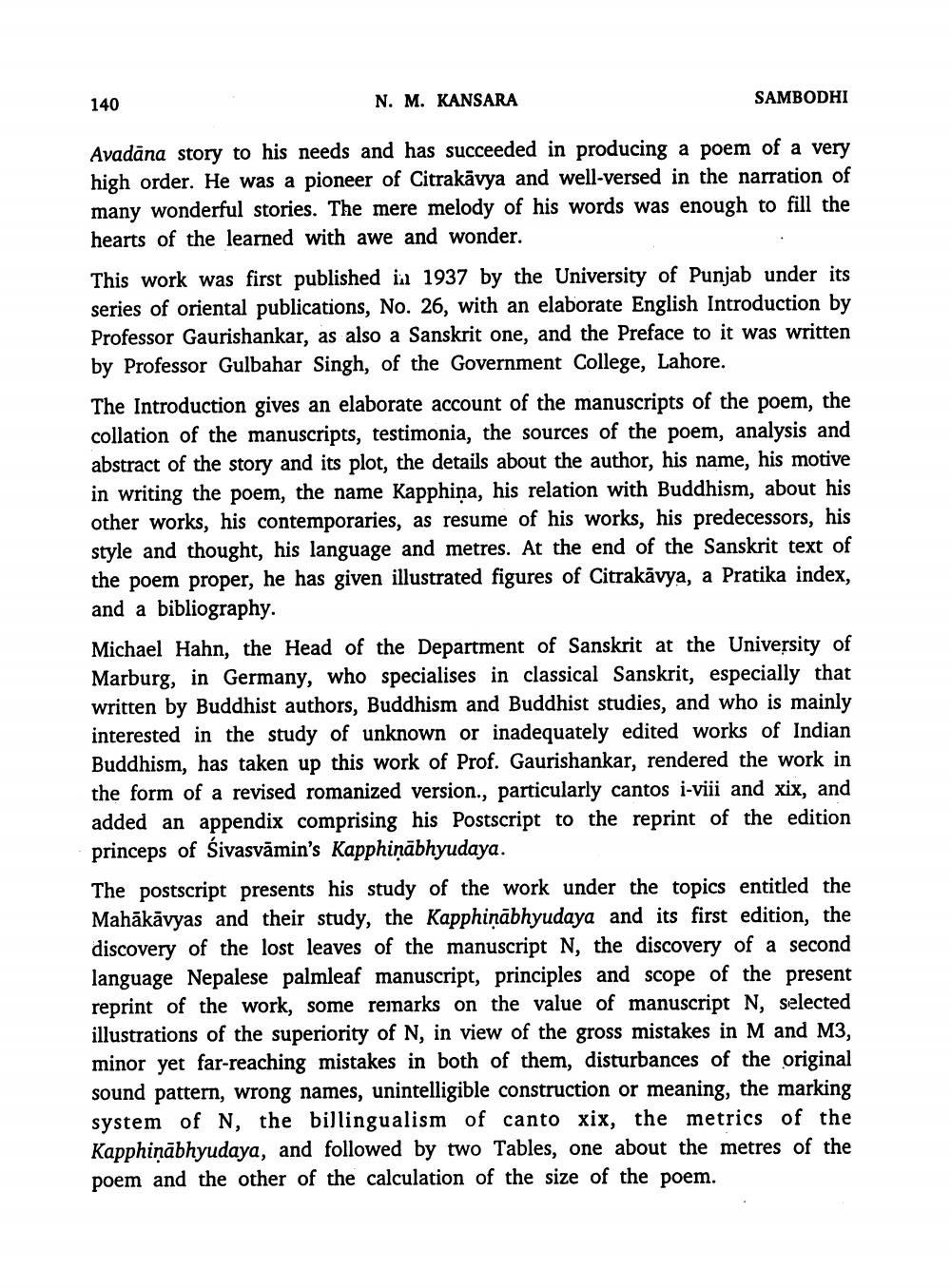________________
140
N. M. KANSARA
SAMBODHI
Avadana story to his needs and has succeeded in producing a poem of a very high order. He was a pioneer of Citrakāvya and well-versed in the narration of many wonderful stories. The mere melody of his words was enough to fill the hearts of the learned with awe and wonder.
This work was first published in 1937 by the University of Punjab under its series of oriental publications, No. 26, with an elaborate English Introduction by Professor Gaurishankar, as also a Sanskrit one, and the Preface to it was written by Professor Gulbahar Singh, of the Government College, Lahore.
The Introduction gives an elaborate account of the manuscripts of the poem, the collation of the manuscripts, testimonia, the sources of the poem, analysis and abstract of the story and its plot, the details about the author, his name, his motive in writing the poem, the name Kapphiņa, his relation with Buddhism, about his other works, his contemporaries, as resume of his works, his predecessors, his style and thought, his language and metres. At the end of the Sanskrit text of the poem proper, he has given illustrated figures of Citrakāvya, a Pratika index, and a bibliography. Michael Hahn, the Head of the Department of Sanskrit at the University of Marburg, in Germany, who specialises in classical Sanskrit, especially that written by Buddhist authors, Buddhism and Buddhist studies, and who is mainly interested in the study of unknown or inadequately edited works of Indian Buddhism, has taken up this work of Prof. Gaurishankar, rendered the work in the form of a revised romanized version., particularly cantos i-viïi and xix, and added an appendix comprising his Postscript to the reprint of the edition princeps of Sivasvāmin's Kapphinābhyudaya.
The postscript presents his study of the work under the topics entitled the Mahākāvyas and their study, the Kapphiņābhyudaya and its first edition, the discovery of the lost leaves of the manuscript N, the discovery of a second language Nepalese palmleaf manuscript, principles and scope of the present reprint of the work, some remarks on the value of manuscript N, selected illustrations of the superiority of N, in view of the gross mistakes in M and M3, minor yet far-reaching mistakes in both of them, disturbances of the original sound pattern, wrong names, unintelligible construction or meaning, the marking system of N, the billingualism of canto xix, the metrics of the Kapphiņābhyudaya, and followed by two Tables, one about the metres of the poem and the other of the calculation of the size of the poem.




